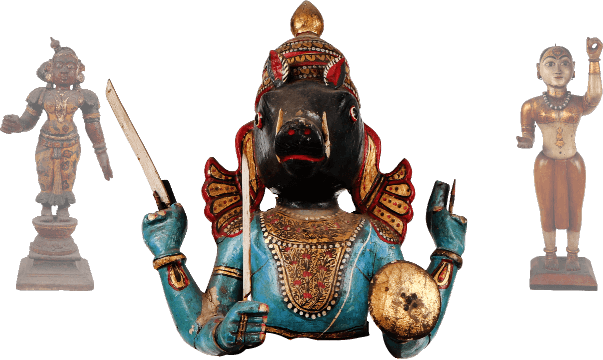Title : Ashtray
Accession No : 54/16/73
This is an ashtray which is round in shape. It has ringed carvings on the body. It has a smaller mouth and has three cylindrical cuts on the rim of the ashtray.
Gallery
Condition
- ConditionGood
- Action NoteCNR
Dimensions
- Measurement (CMS)2.5 × 7.5 (dia)
Significance
- ArtisticThe stone-carving tradition in India is one of the richest in the world. Guilds of masons and stone carvers have existed here since the 7th century B.C. The skills were handed down as family lore from father to son, a practise prevalent in some parts of the country even today. The classical tradition of stone carving was closely linked with architecture. All major temples of India-be it Puri, Konark, Khajuraho, Kailash Temple, or the Shore Temple at Mahabalipuram-illustrate the rich tradition of Indian stone carvings. The artisan first studies the stone and the natural design on it.Design is made on the slab and the rough figure is removed from the slab with the help of Hammer.After the rough figuring, shaping is done with the help of Chisel and Hammer. Minor carvings are generally done with the help of a pointed chisel.The stone is kept in boiling water overnight before carving. This process helps in smoothening and whitening of stone.Artisan sprinkles water in regular periods to avoid heat generation during carving. After the carving is done, the final figurine is smoothened with sand papers or files.
Description
- DescriptionThis is an ashtray which is round in shape. It has ringed carvings on the body. It has a smaller mouth and has three cylindrical cuts on the rim of the ashtray.
- Inscription/Markings No
- Reference"Chhiber, Neelam. Stone Craft of India, 2 volumes. Chennai: Crafts Council of India. 2004. Ranjan, Aditi. Handmade in India: Crafts of India. Edited by Aditi Ranjan & M. P. Ranjan. Ahmedabad: Council of Handicraft Development Corporations, 2007. "
- KeywordAshtray, Stone, Paint




